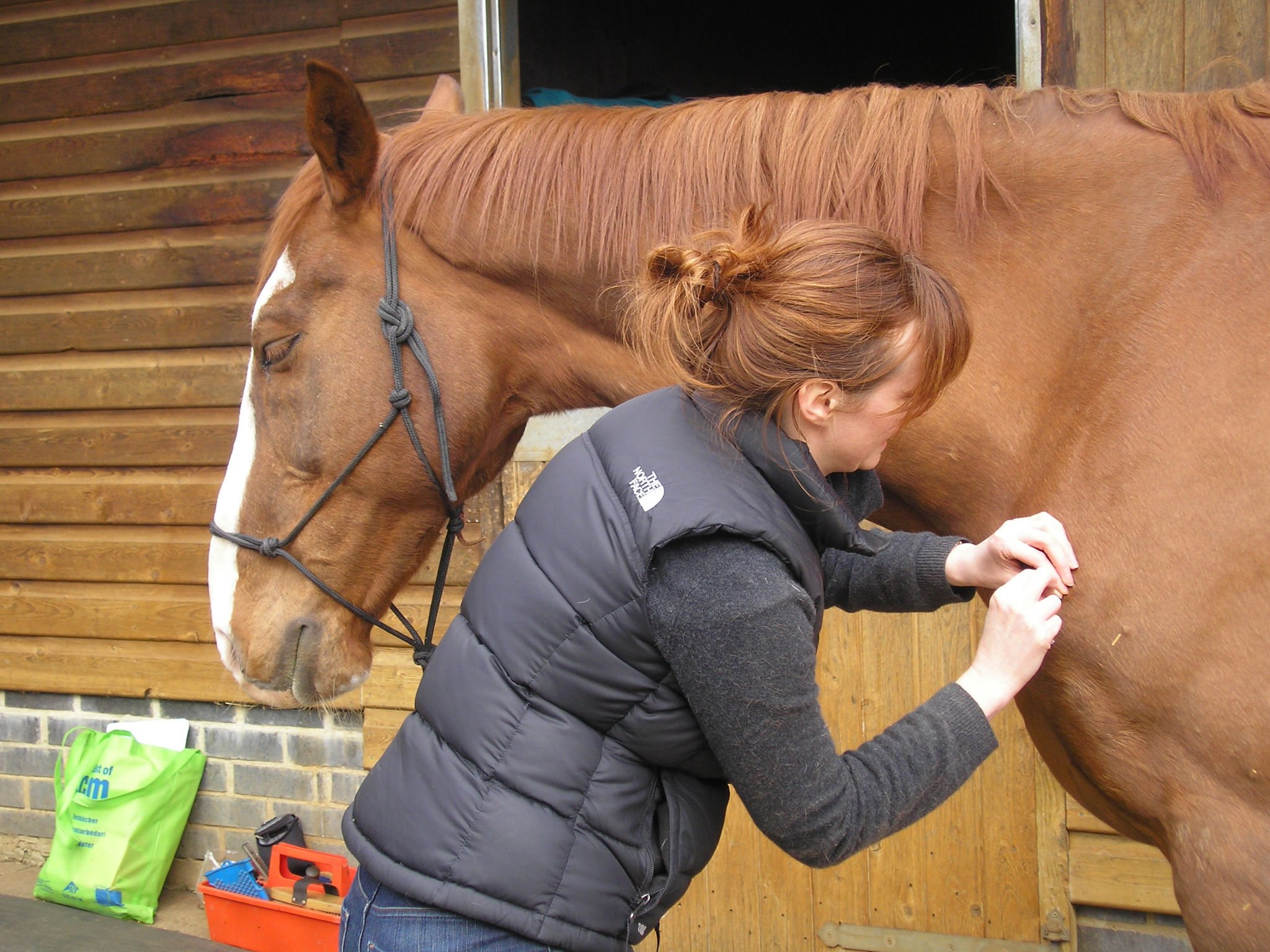
Acupuncture
Acupuncture involves the placing of fine sterile needles into acupuncture points which are found across the body.
There are two "schools" of acupuncture:
Western Acupuncture
Traditional Chinese Veterinary Acupuncture
Amy is trained in both fields, and so can use either system to select the most appropriate points for your pet. At each appointment, we will reassess our patient and determine where the optimal needle placement is for that day - no two treatments are ever the same!
Acupuncture is classed as a schedule three procedure - i.e it is an act of veterinary surgery. Therefore ONLY a vet is legally able to provide acupuncture treatment.
How does it work?
Whilst it is notoriously difficult to design and implement good scientific studies into elucidating how acupuncture works, more and more good pieces of research are being produced that add to the evidence showing that acupuncture does work, and demonstrate some of the ways that it does so. In a nutshell, acupuncture works on the neuro-endocrine system, to provide pain relief for musculoskeletal conditions and alleviate chronic conditions.
What to expect
We normally advise a course of 4-6 sessions of acupuncture initially. Approximately 80% of animals respond well to acupuncture. If your pet has little or no response to acupuncture during this time, it may be that acupuncture is not the best treatment modality for your pet. If this occurs then we can discuss alternative options that we have available.
Most animals tolerate needle placement very well and can become very relaxed or sleepy during treatment. Snoring has been heard on occasion!
There are three outcomes that you may see after a session:
-
This may be in demeanour or in the condition. Client do sometimes report that they see an improvement in the demeanour of their pet shortly before they see an improvement in the clinical condition.
-
This may be that it is simply too early in the treatment plan for your animal - we need a minimum of 4-6 sessions to determine how well your pet 'responds' - or it may be that the improvement was too subtle or transient to see.
-
This can occur if too many needles were used, or were in place for too long. We can alter the needle placement duration or quantity of needles at the next session.


